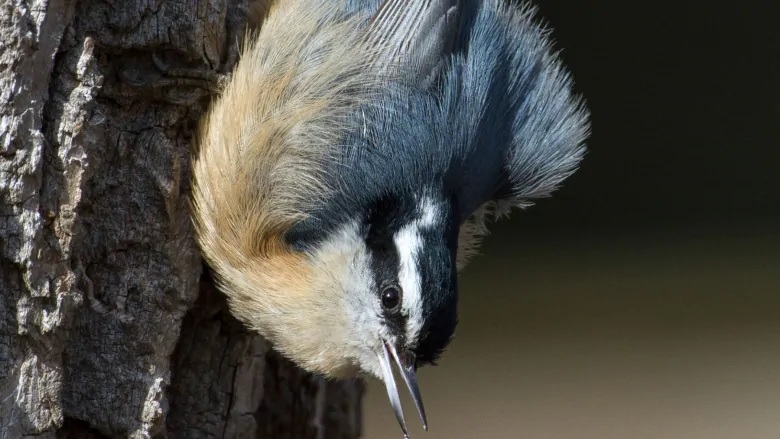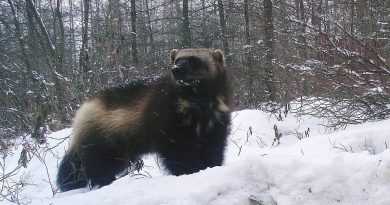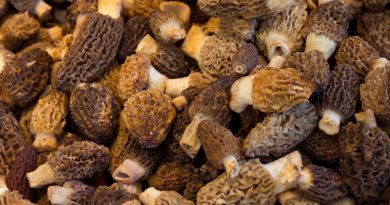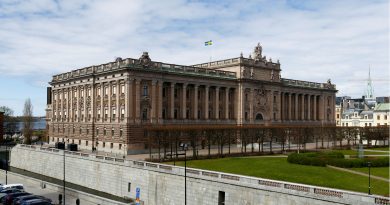Canada’s Arctic, boreal birds will be big climate change losers

Two-thirds of North America’s birds, or hundreds of species, will be squeezed by shrinking habitats if climate change continues at its current pace — especially Arctic birds like the snowy owl, boreal birds like the gray jay and Western forest birds like the mountain bluebird, a new study from the National Audubon Society predicts.
If average global temperatures warm 3 C above preindustrial times, 389 of 604 North American bird species are predicted to lose a significant chunk of suitable habitat where they can live, as those require certain temperature and precipitation ranges that are expected to shrink as climate change pushes warm temperatures further north, says the study released Thursday by the U.S.-based conservation group.
The species include a large proportion of Western forest birds and many waterfowl, such as the American black duck and the green-winged teal, along with almost all Arctic and boreal birds.
“In the Arctic, way up north, there’s no place left to go,” said Jeff Wells, vice president of boreal conservation for the National Audubon Society. “They’re just squeezed out of existence.”
Similarly, the boreal forest has a limited ability to expand north as it gets overtaken by deciduous trees adapted to warmer temperatures in the south, as it’s too rocky further north, Wells said: “A lot of forest trees [and] plants are not going to be able to easily colonize that kind of geology.”
That means some locations could lose up to a hundred species that currently breed there, the report predicts. Other Arctic birds like the rock ptarmigan and lapland longspur; and boreal species such as the boreal chickadee, red-breasted nuthatch and white-throated sparrow will be especially affected.

‘Climate refugees’
The good news is most of those species — about two thirds of them — will probably be OK if the global temperature rises no more than 1.5 C, the report says, suggesting that measures to reduce carbon emissions could have a big impact.
The study was conducted by looking at birds’ current ranges and habitats based on 140 million records from 70 data sources including the Breeding Bird Survey and the citizen science app eBird. It used climate models from the International Governmental Panel on Climate Change to predict how those habitats will shift under different warming scenarios. They categorized birds based on how much range they lost or gained as a result. Some of the results, on grassland birds, were published in a peer-reviewed journal earlier this year, and others have been presented at conferences. The full results have been submitted to journals and undergoing peer review.
The researchers found that a small number of species that aren’t choosy about their habitats, such as the American crow, northern mockingbird, red-tailed hawk, mourning dove are expected to grow their ranges.
But most other species are expected to either see their ranges stay the same, or shrink.
“That means they’re going to shrink overall population size,” Wells said, “and that makes them then more vulnerable to other factors … that can make them more at risk of decline and potentially extinction.”
Because some of their habitats will fragment as the climate changes, Wells says conservation that preserves natural corridors that allow birds to move to new locations are key to their adaptation and survival under climate change.

The study also suggests that Canada will become home to more and more species of “climate refugees” from the south, especially in the taiga and tundra regions and, to a lesser extent the forests along the Rockies, but they too will need natural corridors to move north.
“Habitat conservation is going to be key,” Wells said, “both for the new ones arriving and ones that are there now trying to survive.”
The study was funded by the MacArthur Foundation and the U.S. Fish and Wildlife Service.
Better-case scenario?
Brian McGill is an ecologist at the University of Maine who studies methods for predicting how species ranges will respond to climate change, but was not involved in the Audubon study.
He said his research has found the method used in this study can give approximate trends for future ranges, but isn’t very precise. He added that the calculations used in this particular study likely underestimate birds ability to adapt and move as the climate shifts, and may therefore underestimate their gains in range compared to the losses.His own research modelling individual species finds that they tend to shift their ranges with climate change, but rarely gain or lose much.
He acknowledged that the Arctic may be an exception.
But he doesn’t think the situation is as dire for species in the rest of North America as the study implies: “The link from response to climate change to extinction is scientifically a big leap.”
One thing the study does highlight, though, is that climate change will likely transform what plants and animals you see out your window at a given location — and that doesn’t just apply to birds, but other plants and animals, he added.
“Species are going to be shifting their ranges drastically. That may not be quite the loss change that they’re predicting, but it’s still a big change.”
Related stories from around the North:
Canada: North America’s bird population down three billion since 1970, Arctic breeders hit hard, CBC News
Finland: Migratory birds still sighted as far as southern Finland, Yle News
Norway: Arctic fox’s rapid journey from Svalbard to Northern Canada stuns researchers, The Independent Barents Observer
Russia: Authorities in northwest Russia move to protect wild reindeer, The Independent Barents Observer
Sweden: Poachers suspected behind dwindling wolf numbers in Sweden, Radio Sweden
United States: Art exhibit in Alaska connects bird research to backyards, Alaska Public Media



